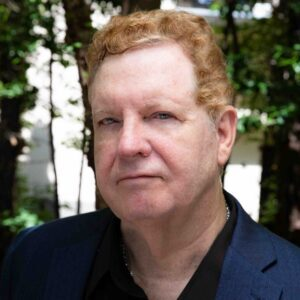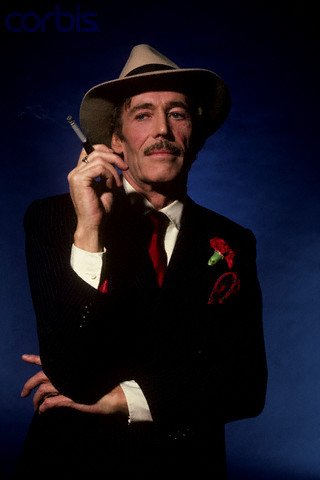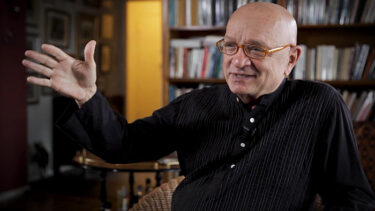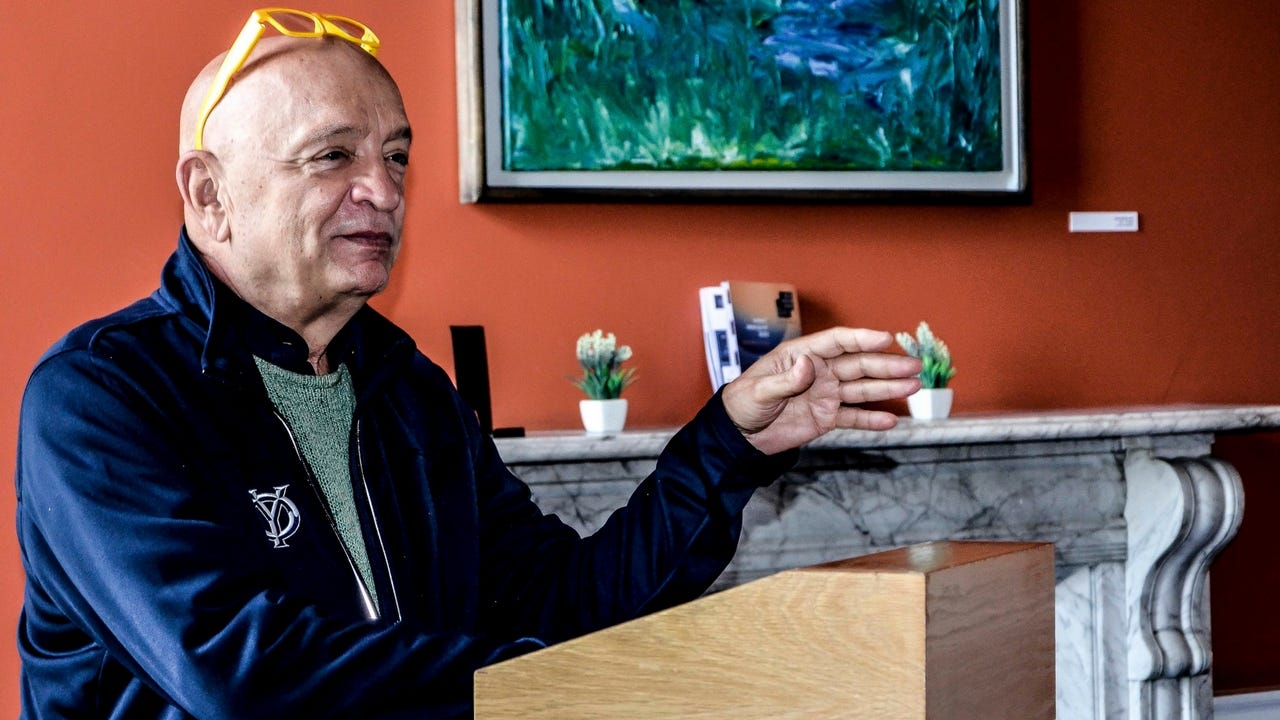THIS EMOTION
How
do you know he is a killer?
He is the one
sitting beside me. The only person in
the courtroom who is being accused of murder, who says I did it, the
killings.
I
first met Dennis in West Valley Detention Center, Rancho Cucamonga, California.
Would you
come into the jail with me?
The
setting is surrounded by thick concrete from the moment you enter the
institution. The smell is like no other. Thirty-five hundred men and nine
hundred women, their bodily excretions, their inability to engage in routine
hygiene—clothing exchange is once a week, and showering perhaps
twice—inadequate ventilation, even their breath from the low-grade, poor-quality
food adds to the stink that is so oppressive that first time visitors are
shocked by the impact of it upon their senses. I am reminded of it at once, and
I unconsciously adapt, forgetting it for the moment.
The lobby is
large: two sets of glass doors, two restrooms, and a multi-windowed counter,
with “Official Visiting” over one window. I have called in advance and I check
in at the counter, showing my driver’s license and bar card. From behind two-inch-thick
glass, the Custody Assistant accepts my cards and pushes a yellow form under
the metal plated drawer under the window, which I fill out and return to her.
She calls the unit where I will visit, advising: “One official on the way.”
Then she slides a small yellow pass along with my ID and bar card under the
window to me.
I take the pass
and cards and I thank her. I walk to a
steel door with thick glass and waive my yellow paper pass at the deputy
sitting in a room to the left of a metal detector. There is a visitors’ window
to the left of the door where civilian visitors check in, give their ID and
wait for the deputies to run them before they are allowed to enter. It is not
uncommon for someone to be cuffed and arrested before their visit, upon a deputy
discovering they have an outstanding warrant.
The deputy pushes
a switch to the right, and I hear a hissing, then the door opens into the wall,
slamming in place. I walk in and pass through a metal detector. I always beep.
Most deputies who know me don’t bother with a wand scan of my body. The
uniformed deputy is no-nonsense, but over time and routine contact with him he
has become civil. He takes my visiting slip, my ID and bar card and begins
writing information on his daily log—who I am, my client and his booking number
and then hands me a key on a long dirty lanyard with an oxidized brass circle-shaped
piece with a hole through it, all held in place on a soldered-closed two inch
ring, kept in an old hotel-type squared key box, where he puts my ID and Bar
Card.
I thank him and
walk out of his office into the room with the metal detector. I stand in front of another steel door,
waiting for the vacuum release to engage the hydraulics so it pulls itself into
the wall with another loud banging. I step into the hallway. When the door
closes behind me it slams and clangs and echoes down the walls and reminds me
that I am now locked inside the jail.
I pivot left, and
walk down a long polished concrete hallway. The walls are drab yellow, a low
energy color. The lighting is bright fluorescent. There is a blue line with
arrows pointing toward me every twenty feet directing people coming out of the
institution back to another locked exit fifteen feet from the room I just left.
Arrows on the
walls with large black letters point ahead, listing units 1-15, one on top of
the other. When I reach a doorway, I make my way to the right around a bubble,
named by inmates, which is a room with limousine black tinted glass shaped in a
semi-circle. I’ve never known what goes on in there. To my right are hallways
to units 11 and 12, then a bit further to units 13-15. They are long hallways,
painted drab yellow with polished concrete floors.
I continue
around the bubble to the left until another hallway comes into view into which
I turn right. On the wall in thick black paint are arrows pointing the way to UNITS 1-10. I continue walking until I
reach another doorway with another bubble. The arrows point me around the
bubble to the right and the first hallway has the bold lettering: UNITS 9-10, the second hallway hold
units 7 & 8. I turn down that hallway and walk 200 steps, finally reaching
unit 7 on the right, unit 8 on the left. By now, I have forgotten the stench of
the place.
I enter a
visiting area with one wall full of glass windows and steel circular seats
welded to a metal post coming out of the wall in front of each window, and
telephones beside each seat with cords six inches too short so visitors have to
lean down to their left to speak while visiting. The visitor must sit in the
seat and wait for their friend or loved one to make it up the stairs from the
room below.
The room is
empty today. I can see the bubble behind the doorway into the room with the stairs.
I see a man wearing orange standing outside a door the top half of which is probably
unbreakable plexiglass, waiting for the door to buzz so he can open it and make
his way to the stairs and up to the visiting area. To my immediate left is a
wall speaker with a button. I press the button, and moments later a male voice
is heard: “Yes.”
“Good morning,
Official Visit for Dennis _________.”
“He’s on his
way.”
“Thank you, sir.”
On the left
there is a locked door. It is a steel door with a see-through window that is
very thick. I insert the key and pull open the door, which is very heavy. I
step in and there are two doors of the same kind on my right, behind which are
visiting rooms for lawyers and other professionals.
The door I have
just entered slams, the noise deafening. It is shocking to the senses each
time, but I’ve become familiar with it. I enter the second room after inserting
the same key, turning the lock the opposite direction of the other door. That
one slams shut also as I step into the room.
The horrible stench
of the unit hits me. It is much more powerful than in the lobby. It is an
overpowering stench. This day it is so strong I am repulsed, wanting to walk
out and away.
This room is
painted a drab yellow, with unpolished concrete flooring, a pile of trash in
one corner of the floor including Kleenex, visiting slips, wadded paper, even
gum wrappers. There is a black mesh screen dividing my side from the inmate
side. There is a concrete counter that runs under the mesh to the other side so
that we can lay our documents, and elbows on it.
Through the
window on the door on the inmate side, I watch Dennis climb the stairs slowly.
It is obvious he is in pain as he chugs his way up. When he finally reaches the
door, he waits for a deputy to press a button buzzing him into the room. He
looks at me and smiles. He has a nice face. His hair is sandy brown and shaggy.
The door buzzes
and he pulls it open, holding it so it doesn’t slam behind him. When he steps
in, I am still standing. I tell him my name and offer my knuckles on the
grating that divides us. We bump knuckles. We both sit. Trying to see his eyes
I move and adjust my vision through the half inch diamond shaped openings in
the mesh. We work together to get a clear view of one another.
I can smell him—his
breath, his days-old perspiration clinging to his clothing that is wrinkled and
frayed with the letters 3X on the thigh and front of the short-sleeved top. I
silently process this sensory information.
He is weary, his
eyes with deep crow’s feet, somewhat red, seemingly blurry as he arranges his
body on the steel plate upon which he must sit. I know how uncomfortable it is,
as I am on the same type seat. I also know that he has had spinal fusion. He is
overweight by at least thirty pounds, looking bloated.
I know about the
food in WVDC from personal experiences. The menu hasn’t changed in years: Frozen
waffles for breakfast, frozen mystery meat sandwiches for lunch, which has an
orange dye in in the meat that stains your fingers if you are able to get to
the hot water dispenser to try to thaw it; and dinner might be any combination
of stuff presented as food, including shriveled corn, some kind of material
passed off as meat, and perhaps on a good day a squashed slice of bread.
Supplements of
starch and sugar are available through commissary, including Top Ramen, ten
cents in the store, a dollar twenty in jail. Milky Way bars are a dollar fifty,
and coffee prices change weekly.
There are no
hygiene products given, so you are either required to buy your own, or if on
welfare, i.e. no money on your books, others in your car—your race—will help
you out. Everyone has to shower when allowed lest they begin to stink. A
resounding beating is in order for the intentionally unhygienic.
Dennis asks me
if I knew Joe, an old friend, one of the Berdoo Hells Angels. I told him I did,
and tears poured from him. He said he had been praying I would somehow find my
way to him. Joe had spoken of me with praise. Dennis had lived next door to him
during his teen years, Joe teaching him how to use a wrench. They had remained
friends, but Joe had died, and Dennis did not know who to call to get my name.
I cried with him,
already believing we were meant to be together in this thing, the multiple
homicide case. He heart-shot three people in his driveway in the desert in the
nighttime in the middle of nowhere. He had been sitting in jail for fourteen
months, his prior counsel leaving him to wait after only one visit, suggesting
he could get him life, plus fifty, instead of 3 lives, plus one hundred fifty,
or maybe death.
He had no hope.
I felt that, too. He had been alone, unable to mourn, now crazy. Each day spent
in conflict with his belief that what he had done was right, but nonetheless
being caged and put on show, the accused.
He told me what
happened that night, and I knew it was true. I saw it with him as he
experienced it, once again, slowly padding his way across the 8 x 10 visiting
cell behind the mesh that separated us.
I
could go with him because I have been taught to develop my ability to feel with
others—to mirror their feelings, to change seats with them and become them, to stand
behind them and express what I feel, hoping they repeat my words, confirming that
I heard them. I have listened and I have felt, and often their pain is so
intense I never leave them, they never leave me.
We would re-visit
that night many times before trial.
I believe TLC
training has opened psychic abilities to see and understand those with whom I
engage, even more so when we are put together on a journey toward trial. Listening, hearing and intuition are all
central to TLC training, and I use it constantly.
There
are limitations on how we can work in the jail. Dennis could not leave; he could
not afford to post the three and one half million dollars bail. I could not
stand behind him, but I could mirror what he said, using his gestures, asking
him how he was feeling, trying to express what I believe he was feeling,
waiting for his confirmation.
It was much more
difficult when our close-up vision was blurred by the mesh. It required greater
focus, something I have developed over my many years of jail visits. I have
been in our various custodial institutions literally thousands of times over
the past forty-one years.
Some of what I
have learned through Trial Lawyers College must be modified to fit the
circumstances, and the person with whom I am working. Dennis was suffering from
deep depression and sorrow. For him, life was over. I had to find my way into
his world and develop trust so I might be able to explain my idea of how we
will present our defense—that he killed those three people in self-defense.
Part of the way in is to be able to love my clients. With Dennis, that was not
difficult.
Dennis
and I shared who we were for seven months while our experts did their work. I
grew to love him more each visit. Every week we met and discussed how he felt.
Often, he was depressed, and we spent the first hour chatting about things bothering
him, working our way into his private hell.
He spoke of the
ghosts that visited each night, still tormenting him. How he wished he had died
that night so he would never have to think about it again. Recalling his dreams
in which I would magically appear and save him. A color emerging in those
dreams finally becoming a blue shirt he wore as we walked out of the courtroom
together to his freedom beyond the door.
While he spoke,
I listened, often mirroring his body language, when appropriate, repeating what
he expressed with my body and words. In time, he began to believe that I saw
him, felt him, understood him, and would not abandon him.
Before me, he
had told his parents to let him go, it was over, because the first lawyer
assured him he could get him that deal: fifty to life instead of three life
sentences plus one hundred fifty year, maybe death.
Most
frequently, we went through that night of the killings, step by step,
remembering how he had felt while it was happening.
It was slow
motion, a sensation I had experienced a couple of times before—once when a
friend was killed as we raced down the street, him on his motorcycle, me in my
Trans Am, and a car turned in front of his motorcycle. The other time I was
thrown off my dirt bike.
When he spoke of
the attack, I asked him to move through it slowly. I did the same, mirroring
his motions on my side of the mesh. He heard the dogs barking and went out to
see if it might be a coyote. I heard them also.
He walked to the
corner of the driveway where the chain link fence ended before it turned the
corner. I stood there with him. I saw the horror on his face when the giant
with a clown mask came out of the dark and grabbed him by the shoulder.
My face filled
with that fear, I felt it, the terror, the adrenaline rush as we blocked the
arm and began stumbling backward across the driveway, drawing from our front
left pocket our snub nose .357 five shot Smith & Wesson handgun we had been
carrying day and night for the past eighteen months.
We drew the gun
slowly with our left hand and were grabbed by the hair on the back of our
heads. We felt the pull toward the ground and brought our gun across our chest
and aimed at the body beside us and fired. The explosion deafened us, and the
flash of light blinded us.
The hand let go
of our hair and we watched a shadow shuffle off with a strange movement of
short steps, into the darkness. We turned and two more shadows were charging
us. We fired and their eyes lit up like demons. We fired again, both times the
gun recoiling, the flash again blinding us, the sound more a thudding. We watched
both shadows turn and shuffle off, that same strange way of moving with measured
steps, into the black of the night. We saw them no more.
We stayed still,
waiting, wondering whether that really happened, and if so, where had they
gone? We heard our hearts beating, but no other sounds.
I asked Dennis
to tell me where he was, what he was feeling. He froze in place. I froze with
him and waited. Several minutes passed before he tried to leave the cell. When
he tried to pull it open, I knew he was going into his house to call 911. I
asked again. “Dennis, where are you?” He slowly turned and looked at me.
He said: “I’m
here now.”
“I went there
with you,” I told him.
“I know.”
We knew we were
ready for trial when we had been through it all several times.
We worked on the
terror he felt as each day began. They were asleep, finally, having thrown
trash into his yard the night before. They stayed up into the wee hours,
talking loudly, several of them, leaning on the fence each night, calling his
name, waking him. So, he built the wall.
It took months
of digging holes large enough to put railroad ties in, tamping the sand to keep
them in place. Each day ended in physical agony. He showed me how hard he worked,
digging, bending, lifting, shoveling, and tamping. Finishing by mid-morning
before the creatures came out and started with their threats.
The first threat
came before the wall. Adam walked to the fence while Dennis worked on the
ground beneath it. He leaned on the fence, Dennis’ fence, his huge arms
bulging, and said: “I’m here to evict some people.”
Dennis tensed.
He had seen Adam. He was an unusually large man, and now Dennis knew he was
mean and had ill will toward him.
“How did you feel?”
“Scared. I asked
him ‘oh really, who?’ and he said I’d find out. I told him I was a Boy Scout.”
“What did you
mean?”
“I’d be ready.”
Several months
passed before Dennis made it out of the desolation of despair and was ready to
communicate, to share, to be challenged in front of a jury.
* * * * *
We set the case for
trial.
I have spent a
good deal of time training in voir dire. Selecting a jury to hear a triple
homicide case was exciting.
I begin with the
presumption of innocence. I share that most people, myself included, don’t
really presume people innocent, that we always think the worst, that when I see
a person sitting where the defendant sits and I wonder what they did. “Who else
feels that way?”
It always gets a
good conversation going, and that is what I want, a conversation. Just a bunch
of good folks having a talk about the law, and the idea of killing and how they
felt about those things, I show them mine, they show me theirs. It works.
Few of us admit
to a willingness to let others take our lives. I’ve spoken with a couple of
people who said they would never kill, not even for loved ones. I thanked them
for their honesty. It takes days to pick a jury in a murder trial, and judges
usually don’t rush the process.
We have to be
comfortable in our own skin to stand and engage people about their beliefs,
embracing each word they offer, thanking them as we go, speaking directly to
them as though there were no one else in the room.
Cross-examination
is probably my favorite activity in life. The state of ecstasy lasts longer
than any other—it goes on and on. The lead detective, a Sergeant by the time of
trial, wrote a report that was vague, but between the lines I knew he was
trying to tell the truth. When he entered the courtroom that first day after Opening
Statements, in uniform, ready to testify, I approached him.
“Sergeant, I’m
Gary Smith. I represent Dennis. I’ve spoken with a lot of people about you.”
“You
investigated me?”
“Yes, and they
all said the same thing. Do you want to know what they said?”
“I don’t know.”
“They all said
you are an honest man, and I’m counting on it.”
Most cops are
good witnesses. They show up in uniform. When called they stroll to the stand,
smiling at the jury. They are sworn, sit and face the jury, some offer a
greeting.
Our Sergeant was
subdued. He did not look at the jury during direct. On cross, he engaged me,
and I took him back to that night, what he saw when he arrived. The jury could
see and feel there was something between us.
The Sergeant
answered all my questions truthfully, which did not help the prosecution,
including that it was obvious the shootings took place on Dennis’ driveway.
The allegation
was that Dennis had laid in wait—ambushing the three deceased, them dropping to
the ground where they were shot, in the dirt road in front of his house—was
slowly dispelled by the prosecution witness, the case agent.
I knew a lot
about the only eyewitness. Part of my belief system is that I should always
know more than the opposition. Some of that comes from knowing my clients. I
had a good investigator, too.
Everyone lies at
some point in their lives, and in criminal cases witnesses on both sides lie.
Some lie because of their fears of being part of the accused. Some lie because
they want the accused to be convicted, others are protecting the accused.
I knew that the
eyewitness, Whitney, was a speed user. I know a lot about that drug and what it
does to people. I heard it in her voice when she was being interviewed that
night by one of the detectives.
I instructed my
investigator how to proceed with her: bring her in, encourage her to be open, assure
her you want to hear her story, thank her when she shares.
I knew she
wanted to talk, and that she would be under the influence when interviewed.
Speed users are not occasional users.
I knew that once
she started telling, she would not be able to stop. She came back for a second
video interview. Rick, my investigator, knew where to take her and she told it
all.
The physical and
forensic evidence confirmed Dennis’ story in every detail. I needed Whitney to
give it up, confirm what I knew. At first, she was combative. A witness can
only remain that way if you join them.
When I took Whitney
on a journey, I did my best to show the world from her eyes, and help the jury
see it, to know how she felt, to understand why she lied, engaging her with a discussion about the
events of that night.
I took her to
her lies. She had forgotten that my investigator had her on video, admitting
her lies, telling the truth.
I understood why
she lied, and so did the jury. She went with the deceased to “fuck him up,” to
“kick his ass.” They were all wigged on speed, or alcohol, Fentanyl and some
pot. They were two huge men and a large woman, and Whitney was with them.
She was in the
midst of the killings, and she wanted out. She knew she might be criminally
liable—we all did.
She set herself
anywhere from eighteen to thirty-five feet from the shootings, yet she saw it
all.
It took
repetitive cross to end the days of her testimony with the same story: they
went there to get Dennis and he got them.
The prosecutor
repeatedly took her back on re-direct to her lies, only emphasizing the
magnitude of them, and I walked her through the truth, again and again.
It was somewhat
cathartic for her, although her addiction did not allow much room for
introspection.
I showed my
empathy by repeating her words with enthusiasm. I did not mock her but pushed
her to embrace the truth each time.
The prosecutor
lost all respect from the jury by getting her to repeat her lies, only to be
reminded of the truth.
Dennis and I
never broke faith with the jury.
The
trial ran Monday through Thursday for three weeks. I presented Dennis as a witness on the final
day.
It was late
evening at the jail, and the place was noisy, even upstairs in our visiting
room. Men drank coffee and ate candy and other supplements purchased through
commissary each week. They were jacked up and restless with nowhere to go. I could
feel the tension, the edge of violence ever-present in custodial settings.
Dennis was
scared about testifying. I could smell his fear, taste it. He hadn’t been
allowed to shower all week because he had been transported from West Valley
Detention Center in Rancho Cucamonga to Victorville each morning, eating only
cold cereal, a peanut butter and jelly sandwich for lunch—squashed flat and
mushy, returning late at night, fed a sandwich of ice-cold mystery meat, then
left to his own devices.
The smell is
unique to him, but I know the sensation it invokes in me. I know the smell of
fear and it is a reminder to be direct about what I am seeing, what I feel, how
I know it.
We are intimate,
and our relationship is based upon trust at the very core of our beings. If I were
less than fully engaged, it would be a breach of trust. I was tired, but so was
Dennis. His days were so much longer than mine.
We discussed his
fear and went deeper to the source. We walked through that night again. I felt
the terror they had instilled in him over those many months before he killed
them.
I felt the
agony, the depression, the relentless anxiety, the remorse, the betrayal of the
government, but there was light in the hope and trust he placed in me.
Again, we
practiced his time on the stand telling the story, the truth that would set him
free. Moving my arm toward the jury box we have created in his cell, I asked
him: “Please tell the jury, did you shoot those people?”
We had a
reminder, me using my arm to direct his attention to the jury should he begin
to look at me. The number one rule: the jurors are the most important people in
his life.
That night,
Dennis was also tired and on edge. He was angry about what the deceased made
him do. He was angry that he was being prosecuted, and that people had lied
about him. He resented the prosecutor promoting Whitney’s lies over and over. I
let him vent.
While he did, I
mirrored his body language. He knew what I was doing.
Finally, he
agreed that if he showed his anger, the jury would not understand. If he showed
his feelings beneath the anger—the pain he felt, they would love him. That had
been our mantra throughout our work. If you bond with the jury by opening yourself
to them, letting them see you in your pain, they will not hurt you.
When Dennis
turned to the jury and, with each question I posed, told them what he did, he
was talking to old friends, just like we had spoken together, telling the story
of the case. When I asked him if he shot Adam, Angela and Robert, he said he
had, and he told them why. He spoke of the endless days of threats and torment,
sleeping with the gun, keeping it in his pocket, the dreams of them killing him.
The attack in the dark with high winds screaming, as though the devil himself
was director of the scene unfolding. He told them it was his worst nightmare.
He wept, and they did too.
When I closed, we all wanted to be able to
defend our lives like Dennis did, and still have a life in the world. Dennis
spoke for all of us. We all wanted to free him of his burden. We felt his pain.
He was a killer, but it was necessary.
* * * * *
They sent us out
that courtroom door, Dennis in his blue shirt.
The
jury loved Dennis, and they knew I loved him.
It all comes
from this emotion.















